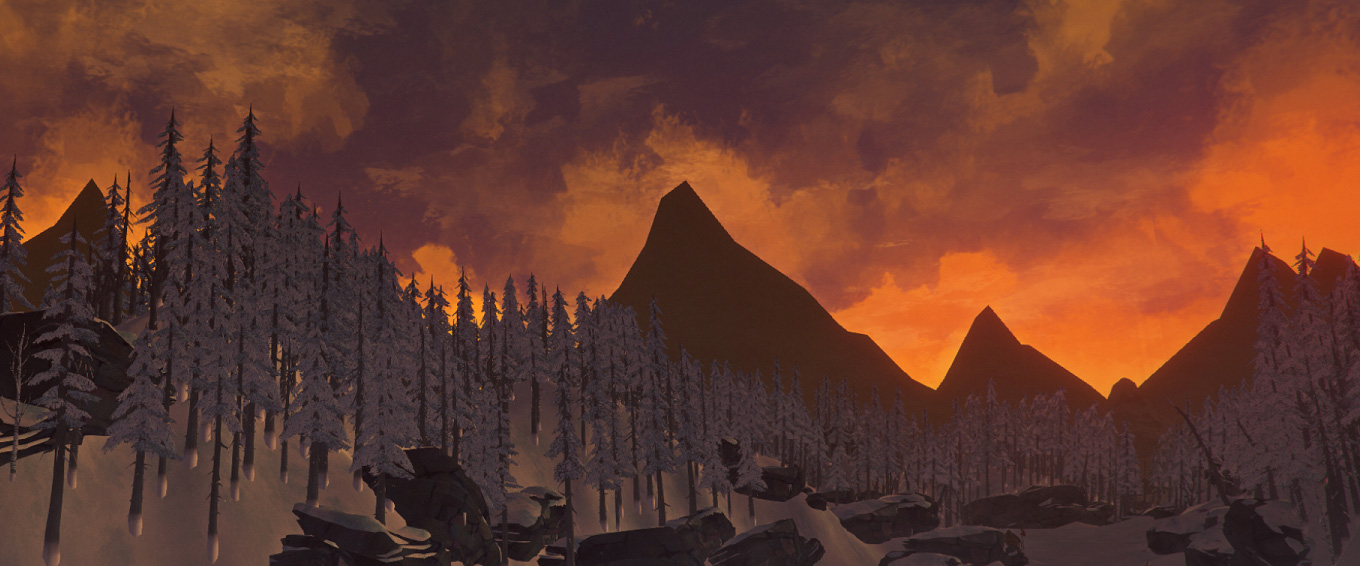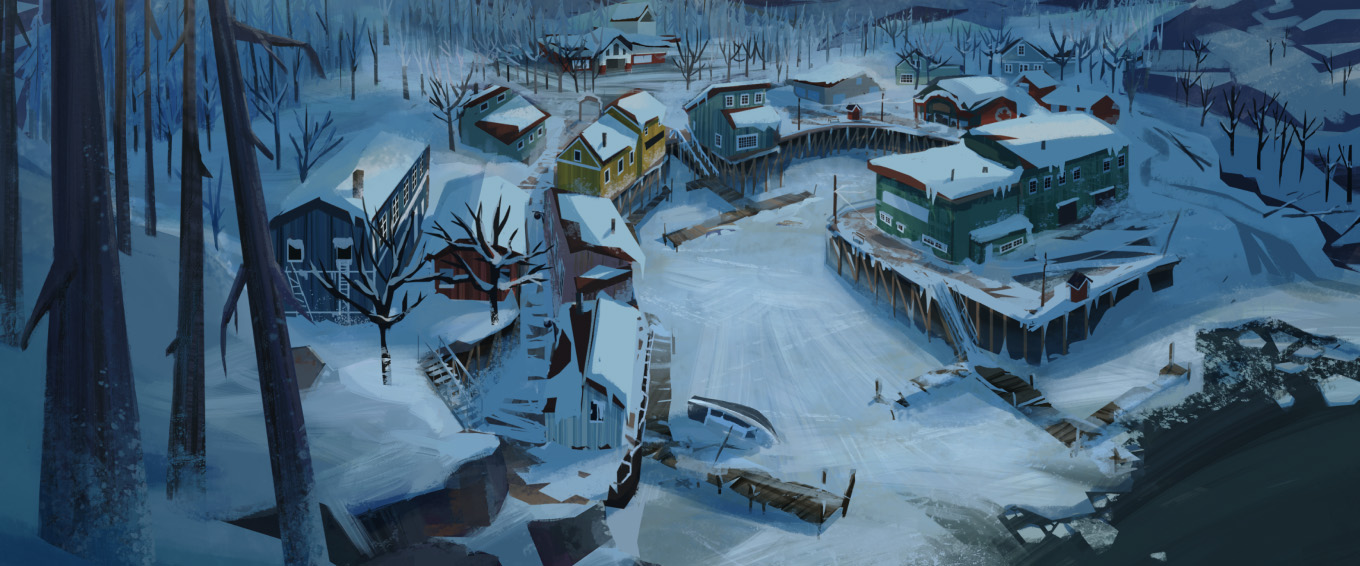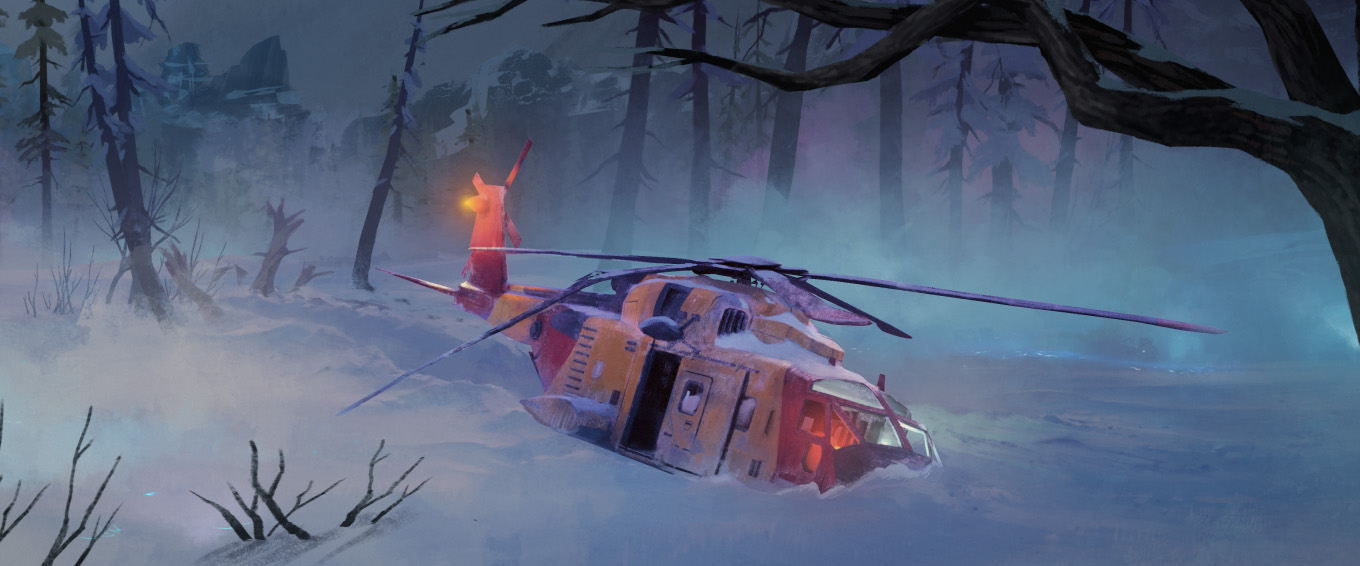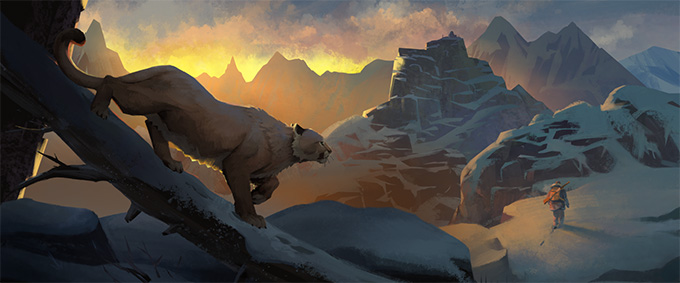
Dev Diary – September 2017
01.09.2017.The Last Days of The Long Dark, and the Road Ahead
Hello community,
It’s been a month since we launched The Long Dark. As many of you know, our launch was not as smooth as we would have liked. Certainly it wasn’t as smooth as many of you would have liked.
Although I’ve talked about some of these things in post-launch interviews, a bit of an explanation seems in order.
In early July, we encountered a crash in the game that knocked us down. In 4 years of development, we’ve never encountered one so utterly baffling. It took most of our engineering and test capacity working on the problem for weeks to narrow down the issue. Although we managed to stabilize the game in the final days prior to our launch — for the most part — we had lost almost a month of polish and bug-fixing time, as a result.
I had to make a call whether we would try to delay the game by 2-3 weeks to make up for that lost polish time. At that point, we were heavily locked in on Xbox and PlayStation timings and couldn’t easily modify the launch date without adding weeks of additional delay, due to how the certification process works. We also didn’t feel that, after already delaying the game more than once over the years, we had much breathing room with the community for yet another. So I made the hard decision to stick with the August 1st date.
In the week leading up to launch, we felt sure we’d addressed the crash, but there wasn’t anything we could do to make up for the 3 weeks of polish and bug fixing time we’d lost. There were bugs and scripting issues that just didn’t appear in our internal testing. And when we launched and had a much larger pool of player data to review, we realized that some of the technical issues we thought we’d fixed, were actually still in the game. Things like save loss and irrecoverable progress were nasty outcomes of these issues that it took us a couple of weeks, post-launch, to resolve. But, by then, much of the damage was done. The issues certainly impacted your first impressions, and they hurt our reviews. After running a very stable and polished game throughout our Early Access campaign, it was incredibly frustrating for us to discover this stability and polish compromised when it mattered most.
Apart from that, we can also see that the story game we shipped in WINTERMUTE episodes One and Two, was not to some of your expectations. Mapping an authored, episodic narrative on an open-world survival game hasn’t been done before. We knew our approach would be a gamble, but it felt like the best way for a small team to populate a large open world with narrative context that could be revealed over time.
It was partly this desire to separate expectations between the Survival Sandbox and our Story experience that led to the decision to split the game into these two separate “modes” in the first place. In order to make this work, I had to make a call — years ago — as to how much the narrative mode of the game would depart from the “sandbox”, both in mechanics, tuning, and linearity. At that point, I chose to let each mode evolve in the direction it needed to, to best support the intended experience: Sandbox would be about empowering player story, Story mode would be about layering an authored narrative on top of survival mechanics tuned to support the specific momentum needed to keep a story moving. Our regions, already separated from each other for technical reasons, would allow us to reveal the world to the player in line with the story’s progression. This was different from the approach taken by most vast-scale open-world experiences, games like GTA, Red Dead Redemption, Skyrim, or Fallout, which allow players to weave between authored narrative or freeform exploration largely as they wish, with the whole world seemingly spread before them. In those games, while the constraints are still there, they are more invisible.
Our belief was that most of the players who were awaiting Story Mode were primarily focused on that experience, and were not our more prolific Sandbox players. So the first parts of our story would have to introduce both the world, and the game mechanics, to players who didn’t know much about either. As a result, Episode One and Two were always going to be more introductory chapters of our story, with the world and gameplay opening up more in Episodes Three and beyond, but I felt that putting constraints on how much of the world you could explore, per episode, was also needed in order to limit the amount of content we had to build. Imagine, otherwise, a situation where you might have all the narrative content in the game happening in Milton or Mystery Lake, and none of it in Coastal Highway, or Pleasant Valley, or any of the other regions. But in that model, strangely, later episodes would unlock narrative content in regions that had previously been devoid of it. That approach didn’t make sense.
Our episodic approach was the best way I could think of to introduce the mechanics and world gradually, control our content scope, and also give us the room to continue expanding the world and storyline with subsequent episodes. But, if you’ve put 100s of hours into the Sandbox, or you’re coming to The Long Dark with Skyrim or Fallout -sized expectations about the level of freedom to explore and opt-out of core narrative you’re going to have, I can understand why The Long Dark’s episodes could feel overly tutorialized and unfavourably constrained.
There have also been criticisms about the writing itself. These are wholly on me. While I don’t agree with all the criticism, some of it is valid and will be considered for future episodes. Tone and writing style are personal things and while I expect the story to become more harrowing as things progress for Mackenzie and Astrid in our post-disaster scenario, I wouldn’t expect any wholesale changes in the tone of the story, moving forward. Some decisions like choosing to have cinematics fully voiced and lip-synced, while mission and Trust dialogues were not, were choices made for production realities, and felt like acceptable trade-offs at the time. When you know that fully voicing and animating every dialogue sequence in the game is not a possibility, you find the best solution you can for how to represent those moments, and to me, our solution was still better than fully static sequences or dialogue cards, which would have been our other options.
In the end, we can’t control how people feel about those choices, and I don’t expect the realities of game production to excuse failings (perceived or otherwise), but as developers we live in the world of what can be done with the resources we have, and hindsight about how players will react to things tends to be 20:20. At the time I made those decisions, they felt like the right decisions, and they *were* the right decisions, given the alternatives. That said, with certain systems and content pipelines now in place for future episodes, it may be possible to revisit some of those choices moving forward.
I don’t intend to provide a line-by-line analysis, response, or rebuttal to the various criticisms levied at the game. What you can see in the game has been created with honesty and is true to my core vision. Despite flaws and launch issues, I’m still immensely proud of the work the team accomplished and any failings in design, direction, or execution ultimately fall on my shoulders. We’ve been very ambitious with The Long Dark. In some ways, our reach has definitely exceeded our grasp. That said, you’ve also only seen the first parts of WINTERMUTE. And while it’s certainly fair to judge the parts we just shipped, my hope is that time will look kindly on our work once the full first season is complete.
That is all about the past. Now what about the future?
After several years of feeling “under the gun” about delivering to promises already made, it’s good to be in a place where we can step back and take stock of what we’ve created, and how it can be improved moving forward. We’ve learned a lot about what worked and didn’t work about our approach to Episodes One and Two. Some of these things would have naturally been addressed by our plans for Episode Three, but probably not to the extent we now realize they need to be.
This means I am revisiting the scope of Episode Three and our approach to how we unify narrative with our survival sandbox gameplay. Based on how our launch went, I feel that Episode Three now has to answer for the issues with Episodes One and Two, to some extent, so while we couldn’t do anything about the August 1st date once we were locked in on it, we’ll now take the time we need to ensure Episode Three, and beyond, have a more solid foundation to build on, and set the bar for what The Long Dark will be. This refers not only to systems and content, but internal processes and tools, as well as people. We have to rethink some aspects of how we’ve approached our story mode, and that goes beyond cosmetic changes. The fixes have to go deeper.
It’s also time for us to get back to Survival Mode. We still have a lot of things we’d like to add — more regions, more wildlife, new and improved survival mechanics, modding support, etc. This means going back to our old balancing act between Story and Survival, and where to put our resources.
I’m sure many of you are wondering about when the next Episode or Update is coming out. We won’t be sharing any speculative roadmaps or dates any more. We find these only serve to set unreasonable expectations and tend to hurt us more than help us, or the community, so we’ll continue working on the game, and release information as progress is made, and won’t share any specific launch dates for Episode Three until we know it is ready to ship. For Survival Mode updates, we’ll have more to say about how we see those taking shape — in terms of scope and frequency — in the future. Before we can do that, we have some organizational and process fixes to make.
Beyond that, our launch illustrated how thinly spread the team has been between all our various commitments. Besides updating Survival and adding more Episodes to WINTERMUTE, we launched all that content on 7 different platforms — Windows, Mac, Linux, Xbox One, PS4 x2 (SCEA and SIEE are two separate platforms), and GoG. Beyond that, we’re currently finalizing a Windows 10 version for Microsoft, which will allow saves and Achievement progress to be shared between Xbox and Windows 10. Each of these many platforms has its own requirements, and the console platforms come with heavy administrative and testing burdens related to certification, ratings, translations, etc. This is another area we’re revisiting now that we’ve fixed the majority of the stability and progression issues with our launch content — how can we improve our internal quality control, and capacity to publish our own game, to ensure that we never experience the trials of our recent launch as a studio again?
It’s been several heavy years of effort, rounded off by a few rough months at the end. The team has worked incredibly hard to get to where we are today.
Now, they need to rest.
To that extent, the entire team will be taking September off to recuperate. We’ll have some minimal community and test support in place during this time, but right now I need the team to recover their stamina and fire for these new challenges ahead. In October, we’ll continue our work on The Long Dark — Episode Three, Survival Mode, and whatever the future holds for the Quiet Apocalypse.
Until then, we hope that the love we’ve poured into the game over the years, and your love for it while it was in Early Access/Game Preview, still shines through, despite an imperfect launch, and that you continue to enjoy and believe in The Long Dark, as I do.
Sincerely,
Raphael


